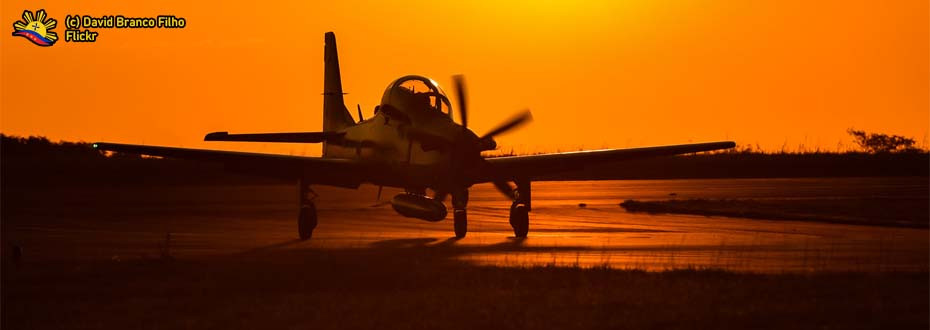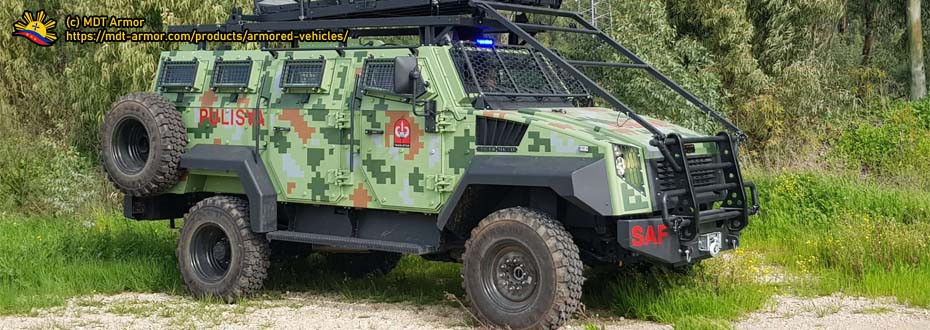The Philippine Coast Guard has the desire to improve its capabilities further, getting to where they see an interest in procuring more assets that fit its mission requirements, which now involve the use of soft loans from several countries the agency deals with.
They may add India alongside Japan and France to the list of suppliers that provided the tools to the country's primary maritime enforcement agency if they pursue the deal they have an interest in, especially in purchasing air assets for its air fleet.
DISCUSSION OVERVIEW
 |
The Dornier 228 aircraft of the Indian Coast Guard.
(c) Jetphotos.net website. |
In the last article, we discussed the Dhruv Advanced Light Helicopters that the Philippine Coast Guard is interested in purchasing from Hindustan Aeronautics Limited using India's credit line. We also provided an overview that involves the procurement of Dornier 228 aircraft, which will be the principal topic to be discussed thoroughly in this article.
This came in line with the same information provided through a known Indian defense outlet, The Defenstar, citing a certain Saurav Jha as they pointed the interest of the Philippines' maritime law enforcement agency in the purchase of at least eight (8) units of license-copied variants of the Dornier Do-228 produced by the said Indian Aerospace Enterprise.
Currently, the Philippine Coast Guard's air unit primarily comprises Airbus H145 utility helicopters, the 3.7-ton Maximum Takeoff Weight (MTOW) rotary aircraft that provides that capability for the agency to conduct its search and rescue operations, as well as the agency's coastal patrol mandates. We will discuss full details for it in a separate article in the future as we tackle modernization-related matters within the agency along the way.
With the interest clearly shown that the Philippine Coast Guard is opting to buy Dornier Do-228 aircraft for its air unit, we will cover much about the origins of the aircraft and its designer. Also, details on how Hindustan Aeronautics Limited secured a licensing agreement that allows it to produce the aircraft, the specifications of the aircraft itself, and the capabilities it brings will also cover in this article.
THE AIRCRAFT DESIGNER
 |
A Do-228NG Dornier Aircraft in RIAT 2012, along with the Dornier Aircraft Logo.
(c) user Airwolfhound, via Wikimedia Commons.
The logo got from Wikimedia Commons. |
Dornier Flugzeugwerke was a known German aircraft manufacturer, founded in Friedrichshafen, in Southern Germany, near the borders of both Switzerland and Austria, by a man named Claude Dornier who was a known German airplane builder, with its technology founded its way into medical products produced by a once-medical subsidiary, now named as the Dornier Medtech.
They found the company in 1914, with the specialty focused on making aircraft designs and producing them in numbers, helping Germany for its aviation needs in both the First and Second World Wars. It produced both civilian and military-based aircraft, intended to cater to both markets that sought a demand for having such aircraft produced by Dornier in their inventory.
There are many things that have happened to the company since then, especially with the sellouts that took place with Fairchild Aircraft buying Dornier from Daimler-Chrysler Aerospace (DASA), forming the Dornier Fairchild company that lasted only a couple of years until it went bankrupt in 2002. One of the reputable successors for Dornier itself is Deutsche Aircraft, a subsidiary of Sierra Nevada Corporation that produces Dornier 328 jets. The other successor is Dornier Seawings, a spinoff company made by the Dornier family itself. Airbus itself has a stake over Dornier Consulting International, the one that has the Dornier trademark in it that was sold recently to "Palero".
Given the number of exchanging hands of different companies that either has the original Dornier design or were once part of the original Dornier company, it is of no surprise that many of its designs are still in production today, such as the Dornier Do-228 that is now being done by India's Hindustan Aerospace Limited.
And with the existence of these designs comes as an opportunity for the Philippine Coast Guard to have them in case they pushed this deal through. Also, the proven Dornier design will help both India and the Philippines in securing this deal, as the latter will use this for their search and rescue, as well as conducting patrols in areas like the West Philippine Sea.
SPECIFICATIONS
 |
| Detailed technical specifications of the aircraft. Access to the PDF File Here. |
As described by Hindustan Aeronautics Limited in a PDF snippet provided above, the Dornier-designed aircraft, being a high-wing monoplane with a cantilevered wing and two turboprop engines, have characteristics that see the benefit for an agency like the Philippine Coast Guard to use, such as its low fuel consumption, short take-off, and landing capabilities, among others described above.
Adding more information related to the technical specifications of the Do-228 aircraft, it comes with a passenger capacity of 19 people, while its 2 Garrett TPE 331-5 engines run at a power of 525kW or 704shp each (or 840 thermodynamic shaft horsepower as per its manufacturer), rotating each of the four-bladed reversible pitch Hartzell propellers that both engines have installed on. The Do-228 aircraft has the capable range of 600km or 324 nautical miles from point to point.
As for the engines, it is currently being manufactured by Honeywell Aerospace, a company that specializes in the production of the TPE-331 engines that currently has 10 variants of the engine with different power outputs and overhaul hours, of which include the TPE-331-5 turboprop engines that powers the Dornier Do-228 that the Philippine Coast Guard aspires to get from India's Hindustan Aeronautics Limited.
Just like the engines, the Dornier Do-228 comes with six variant models, which are the Do-228-100, Do-228-101, Do-228-200, Do-228-201, Do-228-202 and Do-228-212. The aircraft system variant that the Hindustan Aeronautics Limited produces for its coast guard, for instance, is the Dornier Do-228-202 aircraft, while RUAG Aerospace (General Atomics since 2020), another manufacturer of the Dornier Do-228 aircraft, produces the more-advanced Do-228-212 (NG) aircraft.
The number of variants and manufacturers that still making this aircraft until today still shows that the viability and development of the Dornier Do-228 is still ongoing, with an agency like the Philippine Coast Guard showing interest in these air assets takes the advantage in its maintenance and operations, such as in the number of countries currently using this type of aircraft in service.
NUMBER OF USERS
 |
| RUAG Aerospace, another manufacturer of the Dornier Do-228, has delivered an aircraft of the type to a Japanese operator, New Central Airservice. Image Source. |
Currently, there are many military and civilian operators of Dornier Do-228 that both RUAG Aerospace (General Atomics since the RUAG turnover in October 2020) and India's Hindustan Aeronautics Limited have produced for years. One of those operators is the Japanese New Central Airservice (as seen in the image above), wherein the former has delivered a fourth (4th) Do-228 aircraft to the Japanese air service operator in 2019.
Some of the most notable users of Dornier Do-228 in law enforcement field is the Netherlands Coast Guard, which uses two Do-228-212 aircraft in its air unit, the Royal Oman Police Air Wing, which uses two earlier variants of Do-228-100 aircraft for their operations, and of course, the Indian Coast Guard that gets a significant number of Dornier Do-228s from a manufacturer indigenous to their country like Hindustan Aeronautics Limited.
In the military use, meanwhile, some of the known users of the Dornier Do-228 is the Bangladesh Navy which, like the Netherlands Coast Guard, gets two Do-228-212 variants in its air unit. The German Navy also has a few Dornier Do-228s in its inventory, and the Royal Thai Navy and their use of the aircraft as an ISR (Intelligence, Surveillance, Reconnaissance) platform that patrols their Exclusive Economic Zone, much like in-line with the current objectives of the Philippine Coast Guard and their consideration in obtaining these air assets.
Aside from the military and law enforcement agencies that used the aircraft, several civilian operators have also used the aircraft, just like the Japanese operator NCA in the image above. They have different usage of the aircraft, but most of the civilian operators use the aircraft for air transport of cargo and passengers between smaller airports (as it was for the function of regional flights), or purposed charter flights in remote places like far-flung islands in the middle of the sea.
With the number of users coming from these three categories mentioned, the Dornier Do-228 sees its logistical viability that has advantages in the resource of spare parts and sees its reliability as a platform for surveillance and reconnaissance operations that a maritime law enforcement agency like the Philippine Coast Guard wants to improve as the organization grows and improves its overall capability through buying new assets and adding workforce through its pool of interested applicants.
WHAT REMAINS TO BE SEEN
The advantages in obtaining the asset, in the logistical point of view, is that there are many users of both government (military and law enforcement) and civilian operators that uses the Dornier Do-228 for their respective purposes, as either passenger and cargo hauling in remote areas, or surveillance and reconnaissance operations that the Philippine Coast Guard can have with these assets if considered.
It is still in the hands of high-ranking decision-makers of the Philippine Coast Guard in whether to pursue and materialize a project that will procure or purchase these utility fixed-wing aircraft. One is hopeful in seeing an improvement of the maritime law enforcement agency's air unit, especially in obtaining such an aircraft or its equivalent in its fleet.




















.png)



